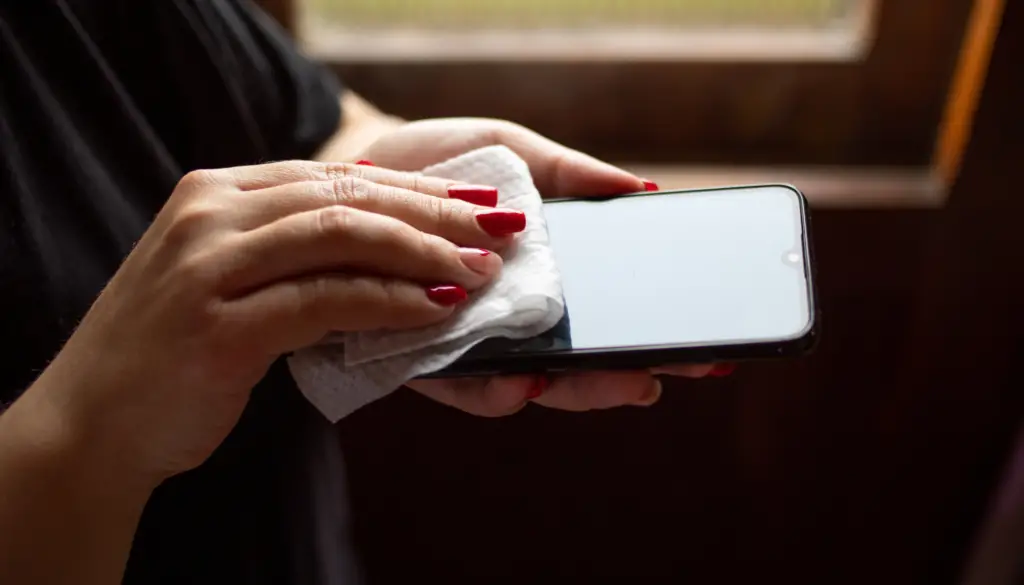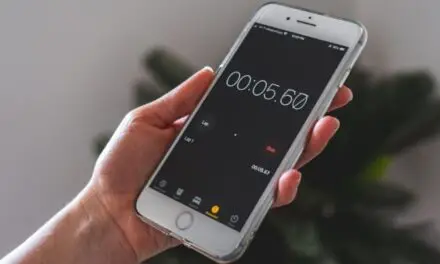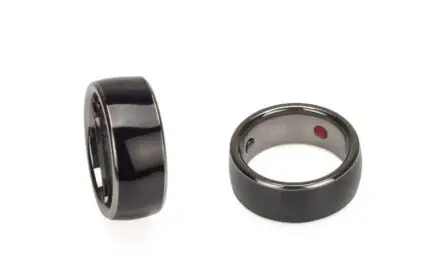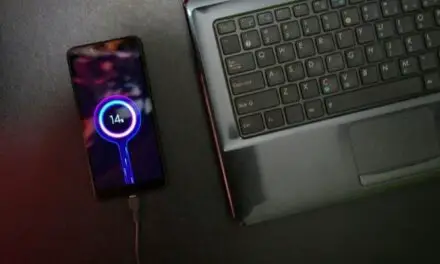Picture the scene: your alarm sounds, you sluggishly reach over to knock it off and instead of the cool, familiar touch of your smartphone, you’re greeted by a wet device. Your mind starts racing – How? Why? And most importantly – What now? This scenario, although puzzling, is more common than you might think.
In this deep dive into this phenomenon, we’ll navigate through the possible causes, signs of danger, immediate actions to take, and prevention measures to keep your phone dry throughout the night.
Table of Contents
Why is My Phone Wet When I Wake Up?

Your smartphone might be wet when you wake up for a variety of reasons. Environmental condensation, particularly in humid conditions, is a likely culprit. Moisture from your body, especially if you’re prone to night sweats, may also be the cause. Or perhaps, an unnoticed spill or a forgotten trip to the bathroom with your phone could be the reason.
Common Causes of Your Phone Being Wet in the Morning
Let’s look more at what common culprits might be responsible for this baffling situation. From condensation to night sweats, spills, and more, let’s dig a little deeper and see if one of these fits the bill and explains why your phone is getting wet throughout the night.
Condensation
Condensation is the most common issue behind your phone being wet when you wake up. It happens when warm air, holding a lot of water vapor, comes into contact with a cooler surface, like your smartphone.
Condensation typically occurs on any surface sufficiently cool enough to transform water vapor in the surrounding warm air into droplets. Consequently, your phone might end up damp in areas where it’s not designed to withstand moisture.
Moreover, if you live in a humid environment or your room isn’t well-ventilated, the chances of condensation occurring increase.
Just to stay on the safe side and if your phone is very wet in the morning, I’d recommend placing it into a container of uncooked rice or silica gel packets overnight. This will help absorb any residual moisture before you go to charge or power up your phone.
Night Sweats
Do you frequently find yourself waking up in a sweat? If so, and your phone shares a spot next to your pillow or lies on your bedside table, it may fall victim to your perspiration.
We usually suffer night sweats when our bedding, sleepwear or mattress isn’t breathable and creates a sleep environment that is too warm.
Even if you don’t feel overly hot during the night, it’s a normal thing for your body to sweat. If your phone is near your pillow or anywhere in close proximity, it can easily end up wet.
Spills
We all love a late-night drink, whether it’s water, calming tea, or something a little stronger. But, leaving a glass or mug on your bedside table can lead to accidental spills, especially if you move around a lot in your sleep.
Don’t underestimate the ability of a small amount of liquid to find its way to your phone, whether it’s through direct spillage, splashes, or even by making your table wet and your phone lying in the moisture.
High Humidity
High humidity in your bedroom environment can also be a reason why you might find your phone wet in the morning. During the small hours, temperatures generally drop. If you’re in an area with high humidity, the decrease in temperature makes the air less capable of holding moisture, leading to condensation. If your phone happens to be nearby (especially on a cold surface), it becomes a prime target for these droplets to accumulate.
Bathroom Moisture
Do you bring your phone into the bathroom with you, perhaps to listen to music during a shower or bath? Bathroom activities often generate a lot of steam, which can settle on your phone, especially if you leave it in the bathroom while you’re bathing.
If you have an ensuite and your bedside is next to the bathroom, shower steam can easily make its way onto your device.
This moisture might not be immediately noticeable but can accumulate over time, leaving your phone damp by morning.
Faulty or Poorly Designed Phone Case
Finally, consider your phone case. While it’s designed to protect your device, a poorly made or damaged case can trap moisture. This can result from condensation, sweat, or liquid spills becoming trapped. Once inside, the water lingers and leaves your phone perpetually damp.
Some cases, like the Neo Crystal Hybrid Clear one from Spigen or the Caseology Coastline case, have been known to cause a build-up of moisture between the case and the back of the phone.
This can be a pain for constantly having to remove the case to wipe away the moisture but shouldn’t be damaging in any way to your phone.
When Should You Be Worried About Your Phone Being Wet in the Morning
While waking up to a wet phone can be a perplexing and irritating start to your day, it isn’t always cause for panic. However, there are some circumstances when persistent or excessive dampness could lead into bigger problems. Let’s look a bit more at some of these red flags.
Corrosion and Water Damage
Water and electronics are notoriously a bad combination. Persistent moisture can lead to corrosion of the phone’s internal parts, causing irreversible damage. The signs of water damage can be subtle at first, such as erratic behavior, apps crashing, or your phone not charging properly. If your phone is regularly getting wet at night and you notice any of these quirks, it might be a sign of internal water damage, and you should probably take your phone to a shop for inspection.
Even a tiny amount of moisture can pose a risk. When a small quantity of water infiltrates a phone, it can linger inside for a considerable time. This can be damaging as the minerals in the water slowly begin to eat away at the circuits, coils, and resistors, all while you remain oblivious to the damage that’s unfolding within your device.
As mentioned earlier, in rare cases, a wet phone could result in a faulty battery. If you notice your phone swelling, heating up excessively or the battery draining a lot faster than usual, it could be down to a leaky battery. This could potentially develop into a major safety hazard and should be looked at by a pro.
Reduced Phone Performance
Another sign of trouble could be reduced performance. If your phone starts lagging, freezing, or rebooting on its own, the persistent moisture could be interfering with certain processes. While these issues can arise from a few different reasons, if they coincide with your phone getting quite wet or being damp regularly, there’s a good chance they might be related.
Swelling Phone
Moisture can sometimes get trapped in the phone, which can lead to swelling.
This could be a sign of serious trouble and needs immediate attention. The pressure from the swelling can damage your phone’s internals and, in extreme cases, can even cause the battery to rupture.
You’d be surprised how many ways your phone’s battery can get damaged. Water damage and even rough handling can cause a battery to develop issues.
Unusual Noises
If your phone starts making strange noises or the speaker sounds distorted, it might be because moisture has seeped into your device’s speaker system, which can be an ongoing issue as even a small amount of water can linger inside the phone for quite a while.
In each of these cases, remember that DIY remedies, while tempting, can often do more harm than good and always having your data backed up could save you a lot of heartache from the start.
Related Article: Why Is My Android Phone Randomly Blocking Contacts? (Simple Fixes)
What to do When You Wake up to a Wet Phone in the Morning
Discovering your phone soaked in moisture first thing in the morning definitely isn’t your ideal start to the day, but panic isn’t going to help. Instead, follow these steps to sort the situation and minimize potential damage.
Don’t Panic, Act Fast
First things first – don’t panic. Swift action is crucial here. If your phone is plugged into the charger, unplug it right away. Electricity and water are a dangerous mix.
Dry it Off
Next, wipe down your phone thoroughly. Use a soft, lint-free cloth to remove all visible moisture. Make sure you pay attention to the crevices and the ports. But remember to go easy! You don’t want to accidentally push water further into the device.
Remove the Case and SIM Card
If you can, remove the case, SIM card, and the battery. This allows these components to dry on their own and also allows better air circulation inside of your phone.
Use Silica Gel or Uncooked Rice
Once the outside of the phone is dry, the next step is to deal with any moisture that might have seeped inside. Placing your phone in a bag with silica gel packets or uncooked rice can help draw out the moisture. Do this for at least 24-48 hours for the best chance of removing moisture from deeper inside your phone.
Don’t Use Heat
Despite what you might have heard, don’t use a hairdryer or put your phone on a radiator to dry it out. This can cause even more damage by overheating the device and melting bonds and internal components.
Test Your Phone
After you’ve given your phone enough time to dry out, it’s time to test it. Switch it on and observe any changes in its behavior. If it’s working fine, that’s great! But keep an eye on it for the next few days for any signs of lingering moisture damage. Check that it is charging as it usually would, check for any bulging in the device or battery and listen for any distortion from the speakers.
Seek Professional Help
If there are still lasting issues with your phone or you’re still concerned about moisture, it’s time to upgrade or seek professional help. Take your device to a certified technician who can properly assess any potential damage.
These steps can help if your phone is wet due to condensation, small spills, or sweat. However, if your phone has had a major water incident, like being dropped in the pool or the toilet (god forbid), it’s best to go straight to a professional. Most importantly, don’t forget to regularly back up your data to avoid losing it in case of damage.
How to Prevent Your Phone from Getting Wet While You Sleep
Learning why your phone is wet in the morning and solving that problem would be far better than dealing with a damp device every morning. Here are some proactive steps you can take to get that sorted:
Keep Your Phone Away from Bed
Instead of keeping your phone on your bed or under your pillow, try placing it on a bedside table or a phone stand. This will prevent the device from absorbing any body heat or sweat and will allow better air circulation across its surfaces.
Use a Phone Stand or Holder
A stand or holder lifts the phone off the surface, reducing the chances of it getting wet from any spills on the table. Plus, it will also keep your device cooler by improving ventilation.
Manage Room Temperature and Humidity
If condensation is a frequent problem, try adjusting your room’s temperature. Maintaining an even room temperature can help reduce the chances of condensation. A/C plus a dehumidifier can be an excellent combination in high-humidity environments to keep moisture levels under control.
Avoid Late-Night Drinks
Reduce the chances of liquid spillages by avoiding late-night drinks, or at the very least, keep them far from your phone.
Use a Waterproof Case
If your phone getting wet is a frequent issue, consider investing in a waterproof or water-resistant case. This can provide an extra layer of protection against unexpected spills or sweat.
Avoid Bathroom Usage
Try to avoid using your phone in the bathroom during your bath or shower to keep it away from steam, which can condense on the device.
Night-time Charging
If you charge your phone at night, remember that the device can heat up, making it more prone to condensation. Try charging your phone during the day instead.
Regular Cleaning
Clean your phone and its case regularly. Dust and grime can attract and trap moisture, so keeping your phone clean can help keep it dry.



